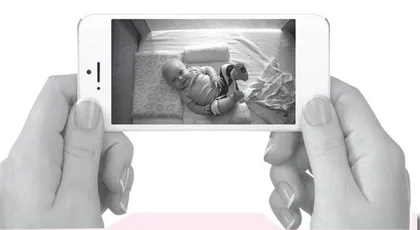How Cuteness Has Taken Over the World 可爱是如何征服世界的

Scroll through any social-media feed, and before long a cute video will appear. Perhaps it shows a giggling baby or a rabbit nibbling carrots. A red panda might be throwing its paws in the air, like a furry thief being apprehended, or a kitten may sit astride a tiny motorcycle.
The supply of these cute videos is huge. On TikTok there are over 65m videos tagged cute. The demand is even greater: those videos have been viewed more than 625bn times.
滑动浏览任何社交媒体推送,很快就会出现一段可爱的视频。视频里可能有个婴儿在咯咯笑;或者是只兔子在啃胡萝卜;还有可能是只小熊猫举起爪子,就像一个毛茸茸的小偷被逮捕一样;或者是只小猫跨坐在小摩托车上。
这些可爱视频的供应量是巨大的。在TikTok上,有超6500万个视频带了“可爱”标签。人们对这些视频的需求甚至更大:此类视频的播放量已超过6250亿次。
What do humans consider cute?
人们认为什么是可爱的呢?
In the 1940s Konrad Lorenz, an Austrian zoologist, found that people are drawn to babies with big eyes, a small nose and mouth and round cheeks, as well as a pudgy body, short arms and legs and a wobbly gait.
These traits motivated people to nurture and protect babies, helping ensure their survival.
Humans are so drawn to these attributes that cats and dogs may have been bred to emphasize those same features.
Cartoon characters have changed, too. For instance, Mickey Mouse’s arms, legs and nose have shrunk since 1928, while his head and eyes have become larger.
20世纪40年代,奥地利动物学家康拉德·洛伦茨发现,人们会被婴儿吸引——婴儿有大眼睛、小鼻子和小嘴巴、圆圆的脸颊、胖乎乎的身体、短短的胳膊和腿以及摇摇晃晃的步态。
这些特点促使人们去养育和保护婴儿,确保婴儿存活下来。
这些特征对人们有极大的吸引力,以至于小猫和小狗在被育种时都很注重这些同样的特征。
卡通形象也发生了变化。例如,自1928年以来,米老鼠的胳膊、腿和鼻子都缩小了,而它的头和眼睛却变大了。
A study from 2015 found that participants felt more energetic and positive, and less annoyed, anxious or sad, after watching cat videos.
Morten Kringelbach, a neuroscientist at Oxford University in the US, has studied the brain’s rapid reaction to baby faces: the orbitofrontal cortex—a region linked with pleasure, among other things, is activated within a seventh of a second. (Men and women are equally eager to look at adorable infants.)
Cuteness has real-world uses. Lovot, a doe-eyed companion robot with a button nose, is covered in sensors and responds positively when cuddled.
Such innovations may help combat loneliness among the elderly. Policymakers, too, might use the power of cuteness to guide people’s behavior.
Japan’s kawaii barriers are thought to reduce road-rage incidents. Putting images on bins of sea turtles or dolphins trapped in rubbish has been shown to reduce plastic waste.
An appreciation for cute things is a joy in and of itself, but it also “has the potential to change the world”, Kringelbach argues. How’s that for a cute idea?
2015年的一项研究发现,受试者在观看猫咪视频后感觉精力更充沛、心态更积极,烦恼、焦虑或悲伤的情绪更少。
美国牛津大学神经学家莫滕·克林格尔巴赫研究了大脑对婴儿脸庞的快速反应:眼眶前额叶皮质(与愉悦等情绪相关的区域)在看到婴儿脸庞的七分之一秒内被激活。(实验也表明男性和女性渴望看到可爱婴儿的程度是一样的。)
可爱在现实世界中是有用处的。Lovot是一个有着大眼睛和纽扣鼻子的陪伴型机器人,它全身布满传感器,能在被拥抱时做出积极的回应。
这些创新可能有助于老年人对抗孤独感。政策制定者也可能利用可爱的力量来引导人们的行为。
人们认为日本可爱风格的路障可以减少路怒事件。在垃圾箱上放一些被困在垃圾中的海龟或海豚的图片可以减少塑料垃圾。
克林格尔巴赫认为,欣赏可爱的东西本身就是一种享受,而这种行为也“具有改变世界的潜力”。这个观点可不可爱呢?
Word Bank
be drawn to 被……所吸引
motivate /'məʊtɪveɪt/ v. 激励;激发
The plan is designed to motivate employees to work harder.
attribute /'ætrɪbjuːt/ n. 属性;特征
trapped /træpt/ adj. 受困的
She became trapped as the tide came in.